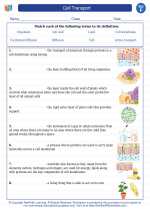Class: An Introduction to Taxonomy
Welcome to the world of taxonomy! In biology, a class is a major rank in the classification of living organisms. It is used to group together organisms that share a set of common characteristics. This hierarchical system of classification was developed by the Swedish botanist Carl Linnaeus in the 18th century and has since become the universally accepted method for categorizing living things.
Levels of Classification
The classification of living organisms is based on a hierarchy that includes several levels. From broadest to most specific, these levels are:
Each level represents a different degree of relatedness among organisms. As we move down the hierarchy, the groups become more and more specific, eventually leading to individual species.
Defining a Class
A class is a taxonomic rank that sits between phylum and order. Organisms within the same class share more characteristics with each other than those in the same phylum, but less than those in the same order. These shared characteristics can include aspects of anatomy, physiology, behavior, and more.
Examples of Classes
Let's take a look at a few examples of classes within the animal kingdom:
- Mammalia: This class includes all mammals, which are characterized by features such as hair, mammary glands, and the ability to regulate their body temperature internally.
- Aves: The class Aves encompasses all birds, which are known for their feathers, beaks, and ability to lay hard-shelled eggs.
- Insecta: Insects belong to the class Insecta, and are distinguished by their six legs, three body segments, and typically two pairs of wings.
Study Guide
To understand the concept of class in taxonomy, it's important to familiarize yourself with the following key points:
- Learn the hierarchy of classification from kingdom to species.
- Understand the role of a class in grouping together similar organisms.
- Explore examples of classes within different kingdoms (animal, plant, etc.)
- Identify and compare the characteristics that define different classes.
- Practice placing organisms into their appropriate classes based on their characteristics.
By mastering these fundamentals, you'll gain a solid understanding of the role of class in taxonomy and its importance in organizing the diversity of life on Earth.
.◂Science Worksheets and Study Guides Sixth Grade. Cell Transport

 Worksheet/Answer key
Worksheet/Answer key
 Vocabulary/Answer key
Vocabulary/Answer key
 Vocabulary/Answer key
Vocabulary/Answer key
